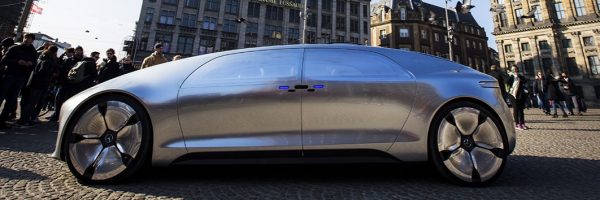How the House Tax Cuts and Jobs Act Could Affect Grad Students

Days before the House of Representatives voted to pass the House Tax Cuts and Jobs Act on the morning of Thursday, November 16, budget experts at the Wharton School at the University of Pennsylvania broke down the proposed bill, discussing its broad potential impact.
The breakdown, per the Wharton Budget Model, focused on three principle findings:
- “This brief reports Penn Wharton Budget Model’s (PWBM) dynamic analysis of The House Tax Cuts and Jobs Act (TCJA), as amended and reported out by the Ways and Means Committee on November 9, 2017.”
- “After including the tax bill’s effects on economic growth, TCJA is projected to reduce revenues between $1.5 trillion and $1.7 trillion. Debt rises by about $2.0 trillion over the same period. Looking beyond the 10-year budget window, by 2040, revenue falls between $3.6 trillion and $4.4 trillion while debt increases by $6.4 to $6.9 trillion.”
- “In 2027, GDP is between 0.4 percent and 0.9 percent higher than with no tax changes. By 2040, the difference between GDP under the House tax bill and current policy is between 0.0 percent and 0.8 percent, due to larger debt.”
The research focused on broader implications, rather than zeroing in on how the bill potentially effects different socioeconomic classes. In conclusion, the research “projects that The House Tax Cuts and Jobs Act reduces federal tax revenue in both the short and long-run relative to current policy. In the near term, there is a small boost to GDP, but that increase diminishes over time.”
Brian Naylor at NPR notes that the bill was passed mostly on bipartisan terms, with Republicans in the U.S. House of Representatives largely pushing it through to the Senate without much push-back. “The vote was almost along party lines, with no Democrats voting in support of the bill and some GOP defections over provisions in the measure that would eliminate important tax deductions taken by constituents in some high tax states,” he writes.
The bill is less likely to pass in the Senate as it did in the House, according to reports from the New York Times. If it were to, however, the new legislation would directly affect graduate students across the board—including MBA students.
Section 117(d) of the bill, which can read here, indicates that all graduate students that receive any kind of tuition waiver will still have to pay taxes on the removed costs. For MBA students at schools like the Tepper School of Business at Carnegie Mellon University, this could mean a year-end cost increase of at least 25 percent, if not more. For students in Ph.D. programs, which often give tuition waivers to help bring in valuable research, the costs can be significantly higher, according to CNBC.
“This makes graduate school unattainable for anybody not already very well off,” 24-year-old grad student Kelly Balmes told NPR. “It also creates a diversity problem, which graduate STEM programs already have.”
MIT Professor Talks Disruptive Potential of Self-Driving Cars

Few modern incarnations have such a high-level of disruption than self-driving cars. MIT Sloan recently took a look at the potential impact.
Last month, the House passed the “Self Drive Act,” which establishes a “federal framework for regulating self-driving cars.” This legislation permits 25,000 self-driving cars on the road annually between now and 2020, followed by 100,000 per year after that.
Sloan professor David Keith, whose research explores emerging automotive technologies, says self-driving cars have “the potential to change the whole paradigm of vehicle ownership.”
According to Fortune, most cars are parked 95 percent of the day. Shared self-driving cars would save car-less consumers money, create less congestion on the roads, reduce commute times, and offer mobility for folks who otherwise can’t drive—“teenagers; people who are sick; those who have lost their license; and the elderly.”
As job opportunities open up for people as a direct result of self-driving cars, it’s likely the ubiquity of autonomous vehicles will put bus drivers, as well as the 3.5 million truck drivers, out of work. Keith puts an optimistic spin on the development, believing there is still a need for human involvement, “whether it is for loading and unloading freight on trucks or ensuring the safety and comfort of passengers on buses.”
The article points out that the House will impose minimal oversight on self-driving car manufacturers due to the fact that autonomous vehicles will significantly reduce the number of motor accidents, which topped 40,000 in 2016, according to the New York Times. Autopilot-activated Teslas reduced the likelihood of crashes by 40 percent, according to data.
Keith concludes, “To ensure that self-driving cars can reliably make good decisions, even in situations they’ve never before encountered, we need to get more self-driving cars on the road.
